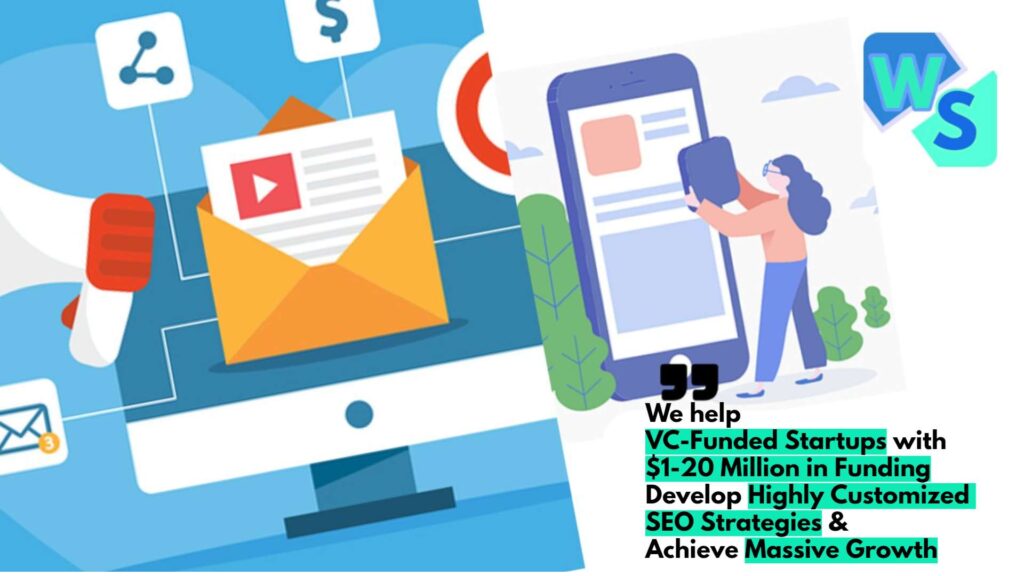Understanding Inbound Marketing
Definition and Evolution
Inbound marketing’s all about getting customers to notice you with helpful and interesting content, rather than shoving products in their faces. HubSpot came up with the name in 2006, but it really took off in 2012 as a must-have for digital marketing. This is where brands get to be all genuine and form real connections with folks.
As the internet’s become part of everyday life, inbound marketing’s been fine-tuned into a slick way to bring in top-notch leads using content and SEO. When you’re in tune with what potential customers are itching for, your brand becomes the go-to friend with the good stuff, not some pushy salesperson.
Benefits for Startups
If you’re just starting out, embracing inbound marketing’s like having a secret weapon for unleashing some serious growth potential.
Easy on the Wallet: Inbound marketing won’t make your budget cry. You can handle the big stuff like creating content and acing SEO without breaking the bank, and sometimes even for free (thanks, Mike Khorev, for the insider scoop).
Goals? Nailed it!: Your mission is to pull in folks who genuinely want what you’re selling. By getting to know your target peeps, startups ensure their marketing hits home with the right crowd (big shoutout to Mike Khorev again).
Smart as it Gets: Unearth golden nuggets of knowledge about what your peeps like and what makes them tick. Keeping an eye on social media chatter and doing some noggin work on audience research means aligning your stuff with what folks want (Mike Khorev gets yet another mention).
Bang for Your Buck: By reeling in the folks most likely to buy, startups crank up the profitability and efficiency of their marketing. It beefs up the chances of turning potential customers into loyal fans, which is what you really want for sustainable growth (yup, Mike Khorev’s wisdom strikes again).
All in all, jumping on the inbound marketing bandwagon lets startups build meaningful customer ties and stretch those marketing bucks. For a real-world look at how this works, check out our examples of inbound marketing to kickstart your creative juices and level up your strategy.
Key Parts of Inbound Marketing
When piecing together a solid inbound marketing game plan, it’s all about zeroing in on three main things: content, getting on that search engine radar, and working the social media. Each of these has its spot in finding and winning over new customers.
Content Marketing
Think of content marketing as the heart and soul of inbound marketing. It’s all about whipping up content that’s both valuable and interesting for the folks you’re trying to reach. We’re talking blogs, videos, infographics, maybe even eBooks if you’re feeling fancy. The goal here is to hand out information that’s genuinely useful, making people want to stick around and start trusting what I’ve got to say.
To really make content marketing pay off, you’ve got to deliver top-notch stuff that solves problems for your potential customers. Not only does this attract them to your content, but it also gets them engaged. When I look for a bit of inspiration, I often check out some inbound marketing examples to see what’s hitting the mark and tweak my tactics.
Search Engine Optimization (SEO)
Now, let’s talk SEO, another big piece of the inbound puzzle. This is all about making sure your content can be easily found in search results, bringing more organic traffic your way. To do this, we’re diving into keywords, optimizing pages, tinkering with technical SEO, and building those all-important links (Backlinko).
Knowing what your competition is up to is just as important when developing your SEO strategy. Using tools like Semrush can pinpoint who your top competitors are and show you the keywords they’re ranking for and their strategies for targeting audiences (Backlinko). Also, don’t underestimate the power of a good backlink. Figuring out what makes others want to link to your content, sometimes referred to as “The Hook,” is crucial for snagging those backlinks (Backlinko).
Social Media Engagement
Social media engagement is the third cornerstone. It’s all about jumping into conversations on platforms like Facebook, Twitter, and LinkedIn. These chats boost your brand’s visibility and help nurture a loyal community.
By sharing good stuff and joining in on the hot topics, you can draw in your target audience and get folks talking about your brand. It’s a great way to make connections with potential customers and keep in touch with those already on board.
Pulling together content marketing, SEO, and social media engagement lets me create a seamless inbound marketing strategy that clicks with my target audience while squeezing the most out of my marketing efforts. If you’re hunting for tools to amp up your inbound marketing, have a gander at our section on inbound marketing tools for some extra tips.
Crafting a Successful Inbound Marketing Strategy
Creating a solid inbound marketing game plan is the secret sauce for startups wanting to grab attention and connect with their crowd. I hone in on four big things: hunting down the right keywords, scoping out the competition, whipping up top-notch content, and getting those precious backlinks. Each piece fits into the puzzle to make inbound marketing click.
Conducting Keyword Research
Keyword digging is like the backbone of a killer SEO plan. Starting with long-tail keywords is my go-to move; these are less of a battle to rank for and hit the nail on the head with what folks are searching for. Tools like Google Suggest help me dig up these gems. So, I come up with a list of about 10 keywords and check ’em out using Semrush or Ubersuggest to see how popular they are and who else is gunning for them.
| Keyword Type | Description |
|---|---|
| Long-Tail Keywords | Less crowded, more specific search terms |
| Broad Keywords | Big, competitive terms everyone uses |
For a deeper dive into keyword strategy tips, hop on over to my thoughts on inbound marketing for SEO.
Competitor Analysis
Sizing up the competition is a biggie when crafting a solid SEO strat. I roll with tools like Semrush to scope out the organic competition—those websites already sitting pretty with the same crowd I’m aiming for. Knowing what they’re up to helps me sharpen my own SEO tactics and whip up content that hits home, aiming for better search results and more eyeballs.
| Competitor Analysis Tool | What It’s For |
|---|---|
| Semrush | Spot the organic competition |
| Ahrefs | Peek at who’s linking to them |
| Moz | Keep tabs on where keywords are hanging |
Want a deep dive into staying a step ahead? Check out my tips on inbound marketing strategies.
Creating High-Quality Content
Inbound marketing’s real bread and butter? Crafting standout content. I make sure my stuff is either way better or just unique compared to what’s out there. The Skyscraper Technique is one way I work it—making my content not just good, but great. I also weave in fresh takes and insights that matter to my crew. Quality content not just boosts me in search but also gets folks talking.
| Content Quality Attribute | Meaning |
|---|---|
| Uniqueness | Fresh spin or angle |
| Depth | Packed with juicy details or data |
| Relevance | Really speaks to who cares |
Need some ideas or inspo? Peek at my favorites at inbound marketing examples.
Building Backlinks
Link love—getting other sites to mention you—is still a search engine darling. I dig into “The Hook”—that special something that makes others want to shout out my content. Stuff packed with stats or killer guides often does the trick. Chatting up industry big shots, dropping nods to trusted sources, and spreading the word on different platforms helps me nail a rock-solid backlink game.
| Backlink Strategy | What It Involves |
|---|---|
| Create Data-Driven Content | Use numbers and data to tell the story |
| Comprehensive Guides | Deep dives that folks trust |
| Outreach | Reaching out and connecting for mentions |
Want to know more about making backlinks work? Jump into inbound marketing tools.
By sticking to these core ingredients of building a winning inbound marketing plan, I keep reeling in the right people, setting the stage for business growth and smashing success.
Making the Most of Inbound Marketing Tools
Picking the right stuff for inbound marketing can really give a startup the boost it needs. These tools not only make life easier but also help in managing all sorts of marketing stuff more smoothly, aiming for sweet results.
Software Tools for Success
There’s a bunch of software out there that can make an inbound marketing game strong. Take ClickUp, for example—it’s like the Swiss Army knife of managing marketing tasks. It gathers everything in one spot so everyone can see what’s what, keep tabs on campaigns, and bond over it all.
Here’s a quick cheat sheet of handy tools:
| Tool | What It Does |
|---|---|
| ClickUp | Handles projects and scheduling all your little tasks |
| HubSpot | All-in-one for automating inbound marketing |
| SEMrush | SEO whiz and keyword geek |
| Buffer | Running the show on social media |
| Mailchimp | Your go-to nerd for email marketing and automation |
These are like your dream team for inbound marketing, each pulling its weight. Making ’em work together is the trick to hitting that sweet spot in your marketing plan. For some juicy examples, swing by our piece on inbound marketing examples.
Integration for Optimal Performance
Nailing it with inbound marketing usually means keeping your tools on the same page. Don’t just stick to one—get a whole crew working together. This combo play means data swaps between tools like BFFs, giving you killer insights and super-effective campaigns.
When you pull the strings right, these software players make sure all the marketing gears are turning in sync with the big-picture goals. That teamwork leads to a smarter workflow, lifting everyone’s game on different marketing fronts. It’s all about checking up on how these tools vibe together to pump up data grabbing, campaign stalking, and sizing up performance. For a deeper dive on making this work, peek at the benefits of inbound marketing.
By teaming up with the right software and making sure they play nice together, I’m setting up a solid inbound marketing strategy that’s gonna hit it out of the park for my startup. It shows why startups need to stay quick on their feet, mixing things up and fine-tuning for long-haul wins.
Inbound Marketing Strategies for Different Industries
Every industry has its own bag of tricks when getting the hang of inbound marketing. Let’s take a peek at what makes sense for B2B companies, SaaS businesses, and eCommerce ventures based on my experience and thoughts.
B2B Companies
When it comes to B2B companies, a good old corporate blog is like gold. Tossing in content about what’s happening in your sector, how to tackle industry bummers, and showing off your expertise is the way to go. Not only does it put your wares on the map, but it also educates people on stuff they might be clueless about. Here’s what could do the trick:
| Strategy | Description |
|---|---|
| Blog Content | Whip up articles tackling industry issues and how to fix them. |
| Case Studies | Throw in some success tales showcasing product perks. |
| Webinars | Run sessions that put you on the pedestal as an industry pro. |
Chewing on these could turn potential clients into longtime pals.
SaaS Companies
For SaaS folks, inbound marketing hits the spot. It’s all about giving people content that grabs and holds attention. Think how-to guides, video tutorials, and super helpful webinars that spell out the magic of your software. And let’s not skimp on customer support and a touch of warmth, eh? Here’s what could work out:
| Strategy | Description |
|---|---|
| Educational Content | Cook up resources to help folks through usual hiccups. |
| User Engagement | Start forums or discussion places to keep the convo buzzing. |
| Exceptional Support | Fast replies and ace resources for questions. |
Nailing these can make users stick around, boosting retention like nobody’s business.
eCommerce Businesses
For eCommerce businesses, inbound marketing can jazz up the shopping spree. With buyers going all-in on mobiles, using inbound marketing and the right tools can be a game-changer. Here’s what’s worth considering:
| Strategy | Description |
|---|---|
| Mobile Optimization | Make sure your site plays nice on mobile gadgets. |
| Content Marketing | Blogs and buying guides to help folks decide on a purchase. |
| Loyalty Programs | Set up perks to keep those repeat purchases rolling in. |
Keeping these tactics in mind could skyrocket customer loyalty and sales, even if the market’s crawling with competitors.
Wanna find more tips? Don’t hesitate to hit up resources on inbound marketing strategies and inbound marketing examples crafted for each industry to make things happen.
Maximizing ROI with Inbound Marketing
Cost-Effectiveness
Let’s talk affordable marketing. For startups watching their pennies, inbound marketing is like finding a dollar in the couch cushions. While old-school ads can suck up cash faster than a kid in a candy store, content marketing and SEO are more like a DIY approach: cheap and cheerful. This means even if you’re holding onto your wallet a little tight, there’s still a chance for your business to shine (Mike Khorev).
| Marketing Type | Average Cost |
|---|---|
| Traditional Advertising | Wallet-buster |
| Content Marketing | Budget-friendly |
| SEO | Budget-friendly |
Zeroing in on these savvy methods, startups can make every cent count and maybe even see a little extra lining their pockets along the way.
Targeted Traffic and Leads
So, you want folks to come knocking on your digital doorstep? Inbound marketing lets you roll out the welcome mat for those who actually dig what you’re offering. It’s like matchmaking for businesses—I can whip up content that hits a sweet spot with different audience segments, boosting chances they’ll stick around. This means more bang for your marketing buck, as you’re not just casting a wide net but reeling in the catches you really want (Mike Khorev).
| Strategy | Result |
|---|---|
| SEO and Content Marketing | Spotlight on you |
| Targeted Social Media Ads | Engaged guests |
| Email Marketing | New faces, more friends |
Honing in on these likely leads means they’re more inclined to become loyal customers. Who doesn’t want that?
Long-Term Benefits
Here’s the real beauty of inbound marketing—it’s not a one-and-done deal. The content and strategies you invest in today keep paying dividends well into the future. For companies relying heavily on subscriptions and recurring revenue, this is especially golden. Think of the steady flow of organic traffic as a boost to your monthly right-in-the-pocket revenue (ARR, if you chat in financial lingo) (Single Grain).
Stick it out, and the data you snag along the way offers a roadmap to getting better. Conversations spinning in social channels and foot traffic on your site become more than just noise—they’re insights, guiding you to adapt and tailor your strategies, making sure you’re always hitting the mark. So, why settle for short-lived gains when you can build a future-proof empire (Mike Khorev)?
When you’re ready to dive deeper into the world of perpetual marketing rewards, check out our page on inbound marketing examples. You won’t regret it.
How I Get More Folks to Check Out My SaaS Site
Getting people to find my SaaS company the old-fashioned way, without paying for ads everywhere, is pretty much about two things: cracking the code behind search engines and sharing some good old-fashioned wisdom.
Why Search Engines Matter
Search engine what’s-its-name (SEO) is like my secret weapon for getting people to visit my site without having to shout it from the rooftop. Showing up at the top of search lists means potential customers are more likely to click, stick around, and hopefully subscribe. For companies like mine, where folks pay a little bit every month or year, keeping the organic traffic coming is like money in the bank, keeping that ARR and MRR flowing (Single Grain).
Check out what I do with SEO and how it helps my business:
| What I Do | How It Helps |
|---|---|
| Hunt Down Keywords | I figure out what folks wanna know |
| Spiff Up My Pages | Makes my site easy to find |
| Get Some Backlinks | Helps my site look trustworthy |
| Spin Some Content | Pulls in the curious crowd |
So to make the most of it, my website’s gotta talk the talk with the right keywords, be easy to navigate, and have some high-quality websites linking back to it. This combo is exactly what bumps up my organic traffic numbers.
Sharing the Know-How
The other biggie? Teaching folks something useful. SaaS stuff can be mind-boggling, so showing folks the ropes is a smart move. By whipping up helpful stuff like how-tos and tutorials, I’m tackling the learning curve head-on. This kind of content ropes in organic search traffic since people like to do some homework before they hit ‘buy’ (Single Grain).
Here’s how my educational content makes a splash:
| Content Type | Gives Me What |
|---|---|
| Blog Posts | Credibility and smarts in the biz |
| Video Tutorials | A visual feast for the brain |
| Webinars | A chance to deep dive |
| E-books | Packed full of juicy info |
By putting the spotlight on both SEO and educational content, I can give my SaaS site’s visitor count a good boost and keep the growth gears turning. If you’re curious to learn more, you might wanna peek into inbound marketing strategies and the different inbound marketing tools that can help out the same way.
SEO Techniques for SaaS Growth
If you’re looking to give your SaaS business a boost, mastering some nifty SEO strategies can be a game-changer. Two main areas worth a closer look are cooking up a solid internal linking game plan and crafting content that packs a punch.
Internal Linking Strategy
Think of internal linking like setting up a friendly, organized neighborhood for your website’s pages. It’s one of those things that might sound nerdy, but it actually makes a huge difference in how your site performs on search engines and helps folks get around your website smoothly (Single Grain).
Here’s a quick rundown on how to nail it with internal links:
| Element | What to Do |
|---|---|
| Anchor Text | Go for catchy, descriptive words that really tell what the linked page is about. This way, search engines and people know what’s up. |
| Link Placement | Drop links in your text where they make sense and feel natural. You don’t want them sticking out like a sore thumb. |
| Hierarchy | Use heavy-hitter pages to link to less known ones. It’s like passing on street cred from the popular kids. |
| Frequency | Don’t go overboard. 2-5 links per page is the sweet spot—you want folks to click, not feel like they’re swimming in a sea of links. |
By thinking this through, you can keep visitors on your website longer and lower the chance of them ditching you at first glance.
Content Marketing Initiatives
Content is like the friendly neighbor who invites everyone over for barbecues and keeps the community buzzing. Great content draws people in, keeps them around, and turns them into loyal fans.
Here’s how to make your content marketing the talk of the town:
| Initiative | Game Plan |
|---|---|
| Blog Posts | Write stuff that solves problems or opens eyes—use keywords that hit home in your field. Keep the traffic flowing by sharing your smarts. |
| Webinars and Tutorials | Teach a class or two on what hurts your audience. Doing this builds trust and potential sign-ups. |
| Case Studies | Flaunt real-world wins. Let prospects see how others benefited from your magic touch. |
| Social Media Content | Make your written pieces and ideas go viral in hangouts your audience frequents. It’s a direct line back to your site. |
Getting these tactics into your playbook can help you create a swell content community where interaction is king and new leads naturally pour in.
If you’re eager to dive further into inbound marketing awesomeness, our guides on inbound marketing strategies and inbound marketing tools are just a click away.
Driving Website Traffic for SaaS Success
Getting folks to visit my SaaS website ain’t just a bonus; it’s the bread and butter of how I keep the lights on. I’ve got a few tricks up my sleeve like keeping customers happy, making more dough from each user, and chatting them up on social media.
Kicking Churn Rates to the Curb
If my churn rate is high, it means customers are saying, “See ya!” and walking out the door. Slashing this number can give my traffic a nice boost since happy customers tend to stick around and bring their pals along. Here’s how I’m planning to keep them aboard:
- Listening to the crowd: Conducting surveys gives me the scoop on what’s working and what’s fizzling—so I can tweak things.
- Top-notch support: Offering stellar customer service makes folks feel valued, and they’re less likely to jump ship.
- Smooth sailing onboarding: Making the initial stages clear and easy helps newbies get the most out of my software from the get-go.
By focusing on making my current users content, they’re likely to toot my horn for me, bumping up my site’s traffic through word-of-mouth and glowing reviews.
Ramping Up Revenue from Each User
Putting a few more pennies in my pocket from each user helps me save up for splashy marketing efforts. When I make my service irresistible, users might just cough up more for premium plans or snazzy extras. My tactics include:
- Sly upselling and cross-selling: Steering users toward add-ons or upgraded features that really uplift their experience boosts my bottom line.
- Gilded support tiers: For a few extra bucks, folks can grab premium perks nobody else gets, nudging them to level up.
- Rollin’ out loyalty perks: Treating them like VIPs with perks and thank-yous keeps them in for the long haul, nudging them to spend a bit more.
When users invest more in my offerings, I can spend more on bringing even more eyes to my site.
Working the Social Media Magic
Social media is my loudspeaker to the world. With the right touch, I can pique interest and hook newbies. Here’s my playbook:
- Creating buzz-worthy content: Snazzy, shareable content nudges my followers to do some of my marketing for me.
- Chit-chatting with followers: Jumping into conversations with my audience builds a buzz-worthy community around my brand.
- Paying for clicks: Strategic, targeted ads can pop up in front of just the right crowd, ushering quality traffic to my site.
By weaving these tactics into my marketing fabric, I’m setting the stage for more clicks and meaningful interactions.
When all’s said and done, focusing on customer happiness, pulling in more per user, and nailing social media tactics, means I’ll be bringing more eyes to my SaaS site. It jazzes up my inbound marketing mojo and sets the course for solid growth in a crowded space. Want to dive deeper into smart marketing? Check out inbound marketing strategies.




















